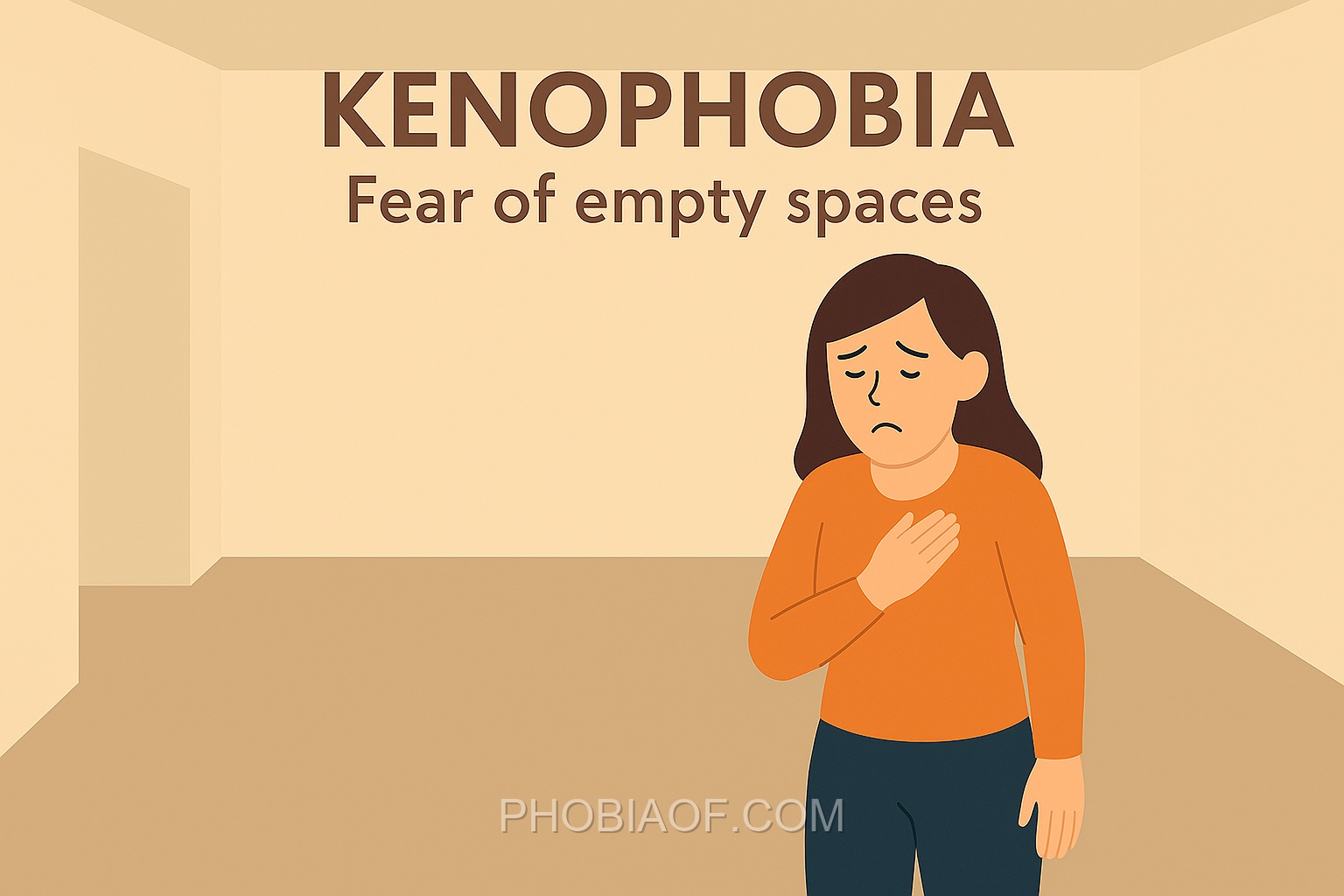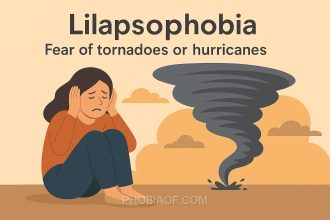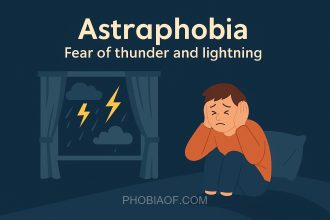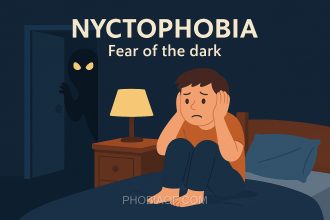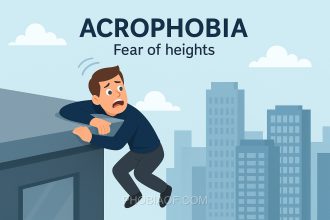Have you ever walked into an empty room and felt an unsettling sense of discomfort? If so, you might have experienced a touch of Kenophobia—the fear of empty spaces.
Kenophobia, derived from the Greek words “keno” meaning “empty” and “phobos” meaning “fear,” refers to a persistent and irrational dread of empty spaces. This fear can manifest in various ways, causing significant distress to those who experience it.
For some individuals, kenophobia might make it challenging to be in large, open areas such as empty rooms, fields, or even wide corridors. The absence of objects or people in these spaces can evoke feelings of anxiety and discomfort. Here are a few ways kenophobia can affect individuals:
- Anxiety and Panic: Being in or even thinking about empty spaces can trigger anxiety or panic attacks, making it difficult for individuals to engage in everyday activities.
- Avoidance Behavior: People with kenophobia might go out of their way to avoid open or sparsely populated areas, which can limit their daily routines and social interactions.
- Impact on Mental Health: The constant fear and avoidance can lead to increased stress, impacting overall mental well-being.
Understanding and acknowledging kenophobia is the first step towards managing it. If you or someone you know is struggling with this fear, seeking support from mental health professionals can provide guidance and strategies to cope effectively.
Causes of Kenophobia
Kenophobia, the fear of empty or wide-open spaces, can develop due to various factors. Understanding the potential causes can help in addressing and managing this phobia. Below are some common reasons why someone might develop kenophobia:
- Genetic Predisposition:
Some individuals may have a genetic inclination toward anxiety disorders, which can include phobias like kenophobia. Research suggests that anxiety and fear responses can be inherited, making certain people more susceptible to developing specific fears.
- Traumatic Experiences:
Experiencing or witnessing a traumatic event in a large or empty space can lead to the development of kenophobia. Such incidents can create a strong association between fear and specific environments, making it difficult for individuals to be in similar settings without anxiety.
- Learned Behavior from Others:
Observing someone else’s fear or anxiety in wide-open spaces can influence an individual’s own feelings toward such environments. If a child sees a parent or close family member react fearfully in open spaces, they might learn to associate those spaces with fear.
- Psychological Factors:
Underlying mental health conditions, such as generalized anxiety disorder or panic disorder, can contribute to the development of kenophobia. These conditions may amplify feelings of vulnerability and fear in open or empty spaces.
- Environmental Factors:
The environment in which a person grows up can also play a role. For instance, growing up in a densely populated area and then moving to a location with vast, open spaces might trigger feelings of discomfort and fear due to unfamiliarity.
While these are common reasons for the development of kenophobia, it is important to remember that each individual’s experience is unique. Addressing the root cause through therapy and support can help manage the fear effectively.
Symptoms of Kenophobia
Kenophobia, the intense fear of empty spaces, can manifest in numerous ways, impacting both the physical and emotional well-being of those affected. Understanding these symptoms is a crucial step in recognizing the phobia either in oneself or in loved ones. Below is a list of common symptoms associated with kenophobia:
Physical Symptoms:
- Panic attacks that can occur suddenly in response to empty spaces.
- Excessive sweating, particularly in situations that trigger the phobia.
- Rapid heartbeat or palpitations when confronted with empty spaces.
- Trembling or shaking, often uncontrollable in nature.
- Shortness of breath or feelings of choking.
- Dizziness or lightheadedness, which can exacerbate feelings of anxiety.
- Nausea or stomach discomfort when exposed to or thinking about vast empty spaces.
Emotional and Behavioral Symptoms:
- Intense, overwhelming dread when anticipating or encountering empty spaces.
- Active avoidance of situations or places that might trigger the fear.
- Feelings of helplessness or loss of control in open or empty environments.
- Difficulty concentrating or thinking clearly when faced with the phobic trigger.
- A persistent need for reassurance from others when feeling anxious about empty spaces.
- Hypervigilance, constantly being on the lookout for potential triggers.
When kenophobia is severe, these symptoms can significantly interfere with daily life, making it challenging for individuals to engage in everyday activities or maintain personal and professional relationships.
Treatment for Fear of Empty Spaces (Kenophobia)
Overcoming kenophobia, the fear of empty spaces, is entirely possible with the appropriate treatment and coping strategies. It’s important to know that this phobia can be treated and managed over time, leading to a more fulfilling and less restricted life. Here, we outline various treatment options and coping strategies to guide you on your journey to overcoming this fear.
Therapeutic Approaches
- Exposure Therapy: This is a gradual process where you slowly face the object of your fear in a controlled and safe environment. Over time, this helps decrease the fear response. You may start by imagining empty spaces, then gradually progress to real-life exposure. This method helps desensitize your fear and allows you to manage anxiety more effectively.
- Cognitive-Behavioral Therapy (CBT): CBT focuses on changing the negative thought patterns associated with your fear. By identifying and challenging irrational beliefs about empty spaces, you can develop healthier thinking patterns and coping mechanisms. This therapy is highly effective in reducing phobia-related anxiety.
- Counseling: Speaking with a mental health professional can provide support and understanding. Counselors can help identify the root causes of your phobia and work with you to develop personalized strategies to manage it.
Self-Help Coping Techniques
- Relaxation Exercises: Techniques such as deep breathing, progressive muscle relaxation, and visualization can help calm your mind and reduce anxiety when facing empty spaces.
- Meditation: Practicing mindfulness and meditation can help you stay grounded and present, reducing the intensity of phobic responses.
- Support Groups: Connecting with others who have similar fears can provide encouragement and a sense of community. Sharing experiences and coping strategies can be incredibly beneficial.
In some severe cases, medication such as anti-anxiety medications may be prescribed by a healthcare professional. However, it is generally recommended to focus on therapy and developing coping skills as the primary approach.
Remember, seeking professional help is a crucial step if kenophobia is interfering with your daily life. Mental health professionals can provide the guidance and support needed to overcome this fear. With time, patience, and the right strategies, you can manage and eventually overcome your fear of empty spaces.
Conclusion
Understanding the causes and symptoms of kenophobia can significantly empower individuals to effectively address this fear. By recognizing the underlying triggers and acknowledging the impact of this phobia, readers can take proactive steps towards managing their anxiety. Remember, phobias are a common experience, and many people successfully overcome or manage them with time and appropriate support.
It’s important to approach kenophobia with patience and self-compassion. Consider reaching out to a mental health professional or a doctor for guidance tailored to your needs. Therapy can offer valuable strategies for coping and can help you regain control over your fears.
Embrace the journey towards overcoming kenophobia with optimism. With the right support and determination, you can navigate your anxiety and move towards a more fulfilling life. Remember, you are not alone in this journey, and help is always available.
